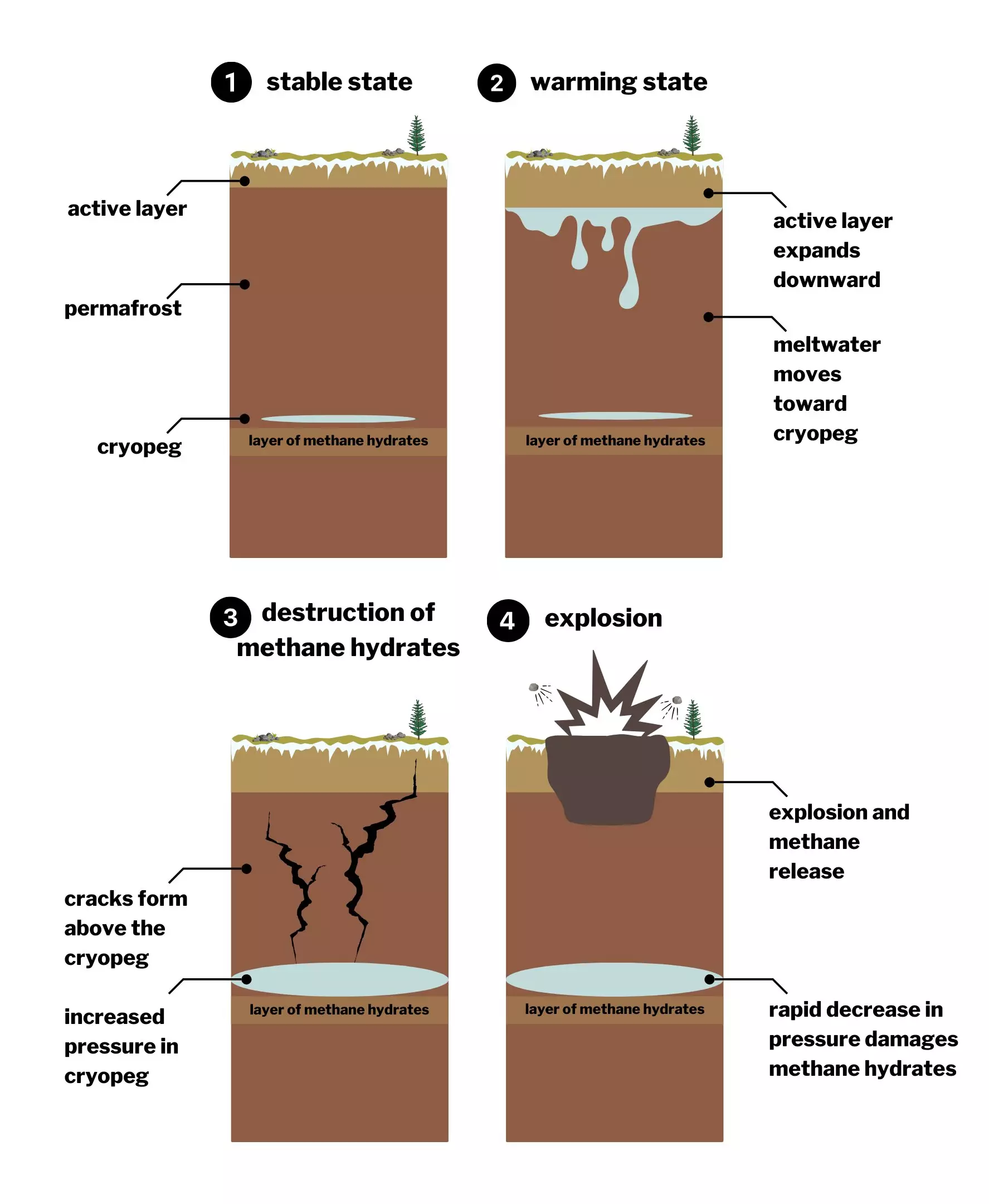In 2014, a peculiar geological phenomenon emerged in the remote Yamal Peninsula of Russia, capturing the world’s attention. Craters, some reaching approximately 70 meters in diameter, appeared seemingly overnight within the Siberian permafrost, prompting a wave of curiosity and speculation about their origins. For nearly a decade, scientists and researchers grappled with explanations ranging from methane explosions triggered by melting permafrost to the proximity of natural gas reserves. Recently, however, a new study has cast a light on the true cause of these enigmatic formations: a complex interplay between climate change and the unique geological conditions of the region.
Published in the academic journal Geophysical Research Letters, recent research has shed new light on the craters’ formation. The study’s authors, including chemical engineer Ana Morgado from the University of Cambridge, argue that specific geological conditions are vital for the explosive release of methane gas locked within the permafrost. This theory builds upon previous hypotheses but refines them, attributing the observed phenomena to subsurface pressure changes rather than surface-level warming alone. The research emphasizes the collection of geological nuances that culminate in these explosive events, indicating that the Yamal Peninsula’s geology is uniquely suited for this phenomenon.
According to Morgado, the craters are the product of a “niche geological space.” Unlike other regions, where permafrost thawing leads to simple surface runoff or soil degradation, the combination of pressure buildup and subsequent release of methane creates a more hazardous scenario. The geological conditions—such as the presence of thick clay layers and the unique composition of underground saline water—form barriers that can lead to explosive gas release.
Geometric Relationships: The Science Behind the Explosions
To decode the mystery of these craters, researchers approached their investigation through a series of methodical steps, questioning whether the explosions stemmed from chemical reactions or simply physical processes. Geophysicist Julyan Cartwright elucidates two potential sources for explosive phenomena: a chemical reaction akin to a detonating explosive or physical disturbances much like a bicycle tire bursting due to excessive pressure. The initial findings suggested that the craters were not the result of chemical reactions, leading scientists to hypothesize about physical mechanisms at play.
Central to this theory is the concept of osmosis—where fluids move to equalize solute concentrations. The Yamal Peninsula features thick, clay-rich permafrost that acts as an osmotic barrier. The study proposed that as the climate warms, the layer of frozen ground thaws and allows meltwater to percolate downward before reaching the high-salinity water layers known as cryopegs. This influx of water, however, can’t be accommodated, leading instead to a significant buildup of pressure in these subsurface structures.
The Trigger Mechanism: From Pressure Buildup to Explosive Release
As the research indicates, the increasing groundwater pressure generated from osmotic processes creates fractures in the earth, which propagate upward. When these cracks disrupt the stability of the gas-hydrate layers below, a rapid change in pressure occurs, resulting in the explosive release of methane gas. The process unfolds over decades, suggesting that these catastrophic events are not spontaneous but rather the culmination of gradual climatic changes and geological alterations.
This timeline of events reflects broader trends observed since the 1980s, which show a marked increase in climate warming in the Yamal region. The phenomena hosted by this remote part of the world are thus not just localized oddities; they serve as indicators of the potential consequences of global climate changes.
The emergence of new data around the Yamal craters invites a broader discussion about climate change and its unexpected repercussions. While many conversations surrounding climate impact focus on rising sea levels or extreme weather patterns, phenomena like the craters offer insight into complex geological responses to climate change that can lead to hazardous conditions. Understanding these interactions is essential for developing better predictive models for future geological changes, not only in Siberia but in other regions experiencing similar climatic shifts.
The mysterious appearance of craters within the Siberian permafrost serves as a compelling reminder of the interconnectedness of our planet’s climatic, geological, and chemical systems. As researchers continue to uncover the specifics of these events, the ongoing dialogue about climate change must evolve to consider not only the immediate consequences but the indirect and intricate failings in our planet’s geological stability. The Yamal Peninsula remains a focal point for future research, an ever-relevant testament to the unpredictable ramifications of a warming world.


Leave a Reply